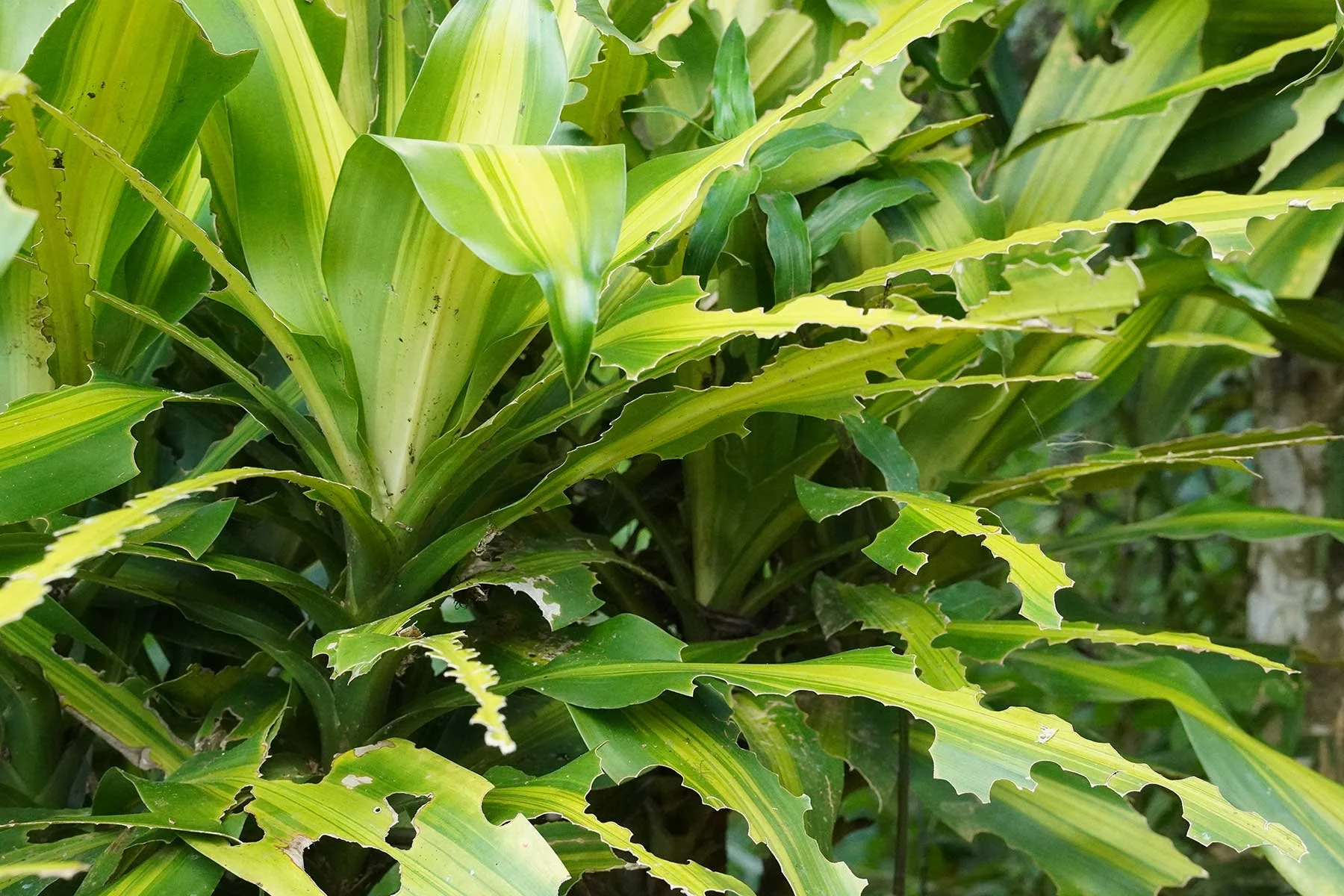How We Deal with Leaf-Cutter Ants
Written by Colin, February 2025
For many people who have adjusted to living in Costa Rica, what to do about leaf-cutter ants is a common topic of conversation. When we first visited this country in early 2022, seeing a stream of ants crossing a rural road toting chunks of vegetation bigger than themselves was very impressive. It was pretty and, and very evocative of the tropics. We gawked and took pictures. As landowners, though, we now know how much these ants can strip a tree or a whole area bare. We have a local friend who had various mature citrus trees stripped of all leaves by leaf-cutter ants, so it is a real danger for those with plants to defend.
What they eat and where
These ants - which are referred to here as zampopas - mostly go for the leaves of fruit trees and other broad leaves, as opposed to vegetables. A common target is caña indio, a tall and thin plant that is common in living fences here and often sold as a houseplant in the U.S. If you see your plant with lots of little curves missing from its leaves, beware!
Zampopas can walk hundreds of feet between their nest and their target. Tracking them through the brush to find their nest is valuable, to see how big it is and be able to attack it. The nests here are sandy-colored and underground, sort of resembling a low termite mound.
How to deal with them?
The big question is what exactly to do about these creatures. Folks here usually try to kill them, and there are nearly infinite ideas for doing so. Many are natural, like putting urine in their holes, or three-day-old cooked rice. And various agrochemicals are sold, with varying effectiveness. With some approaches the goal is to kill the ants that walk across the substance, for some it’s to have them enter the nest and kill the others, and for some it’s to undercut their food source. The best North American parallel is probably gopher trouble - both cause massive trouble and sometimes even get attacked with underground explosions.
Their food cycle
Leaf-cutters don’t eat the leaves themselves. They use them as fodder to grow a fungus in their nests which they then eat. If you can interrupt that cycle - for example by introducing a different fungus, or something that makes their food rot - the whole nest can be lost. Often a queen will then leave the nest to start another one nearby. She’s vulnerable to being caught or killed, but if you’re not vigilant, another nest can result, and you only actually bought yourself time.
Queen Leaf Cutter Ant
Our technique
Our land guy Jose has tried tons of approaches to killing the zampopas over time, almost all of them without success. In one episode we used the primary poison here picudo, and that knocked the nest down to nothing, but a month later it recovered and started again. Jose began digging out nests by hand, which can be as shallow as a couple inches if you catch it when young, or up to maybe 5 feet deep if it’s an old, established nest. He and a work-trader from Switzerland once spent about two days excavating a huge nest near our house. He now patrols the property once per week, looking for signs of the ants, tracks them to their nest, and digs them up. His goal is to find the huge queen and kill her, also exposing the food quarries and egg lairs to the outside world, where they die.
The other part of our approach is to use picudo for really big nests in parts of the property away from our crops and where we haven’t started engaging in activity, as well as in our neighbor’s property. He has cows, crops, and forest, and uses Big Ag chemicals like most Costa Ricans, so is fine with Jose tromping around and poisoning nests on his side with poison. That can be a trick here: having control of the source of leaf-cutters, if around neighbors who don’t combat them. In that sense, a large property may be best, in order to control most of where they could come from.
So that is the balance we have struck - have a tico with a good eye find and dig out nests weekly before they gain any size, and poison big nests that are further afield. My understanding is that being 100% free from zampopas for any real length of time isn’t realistic, so what we have might be the best viable long-term arrangement.


